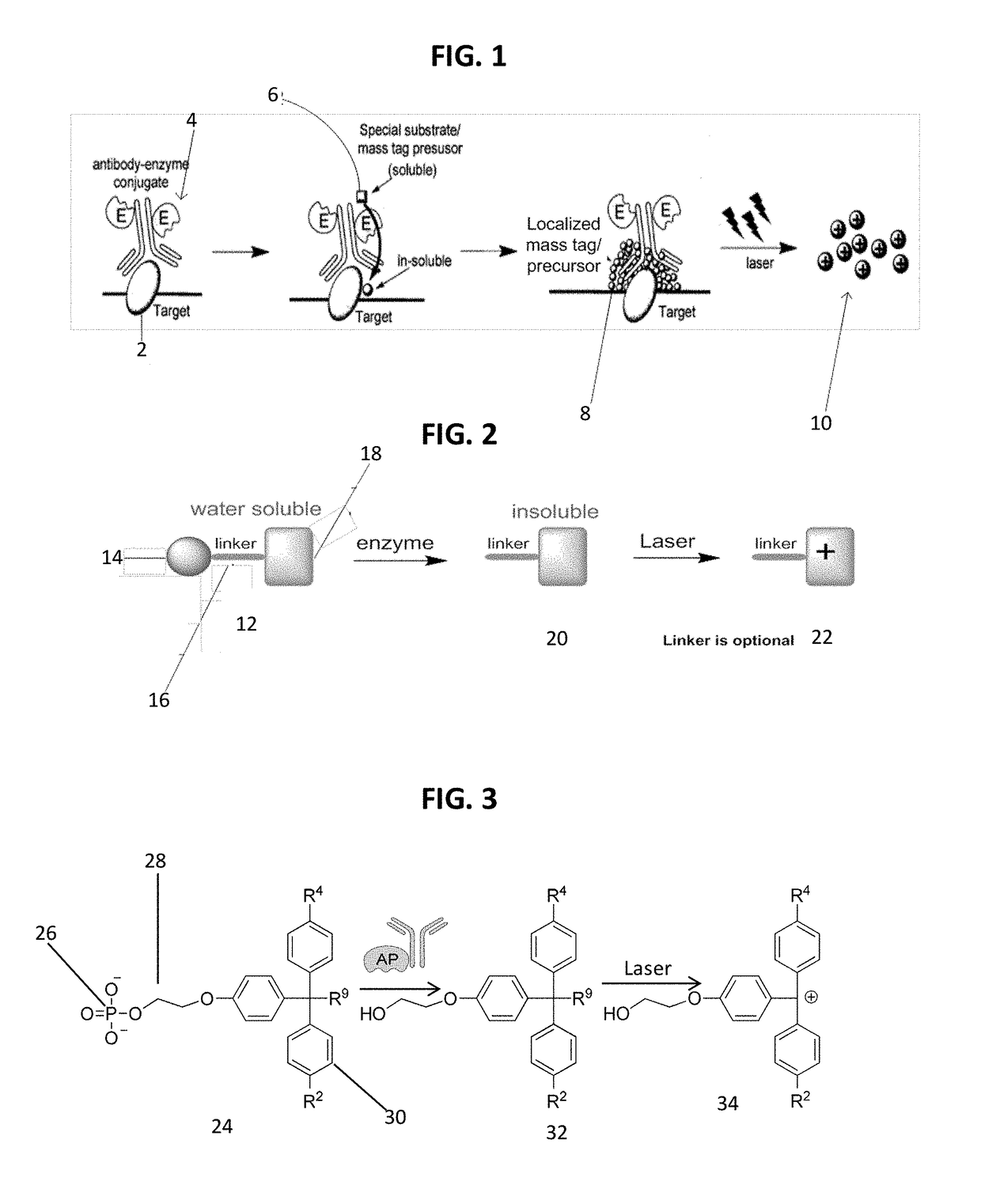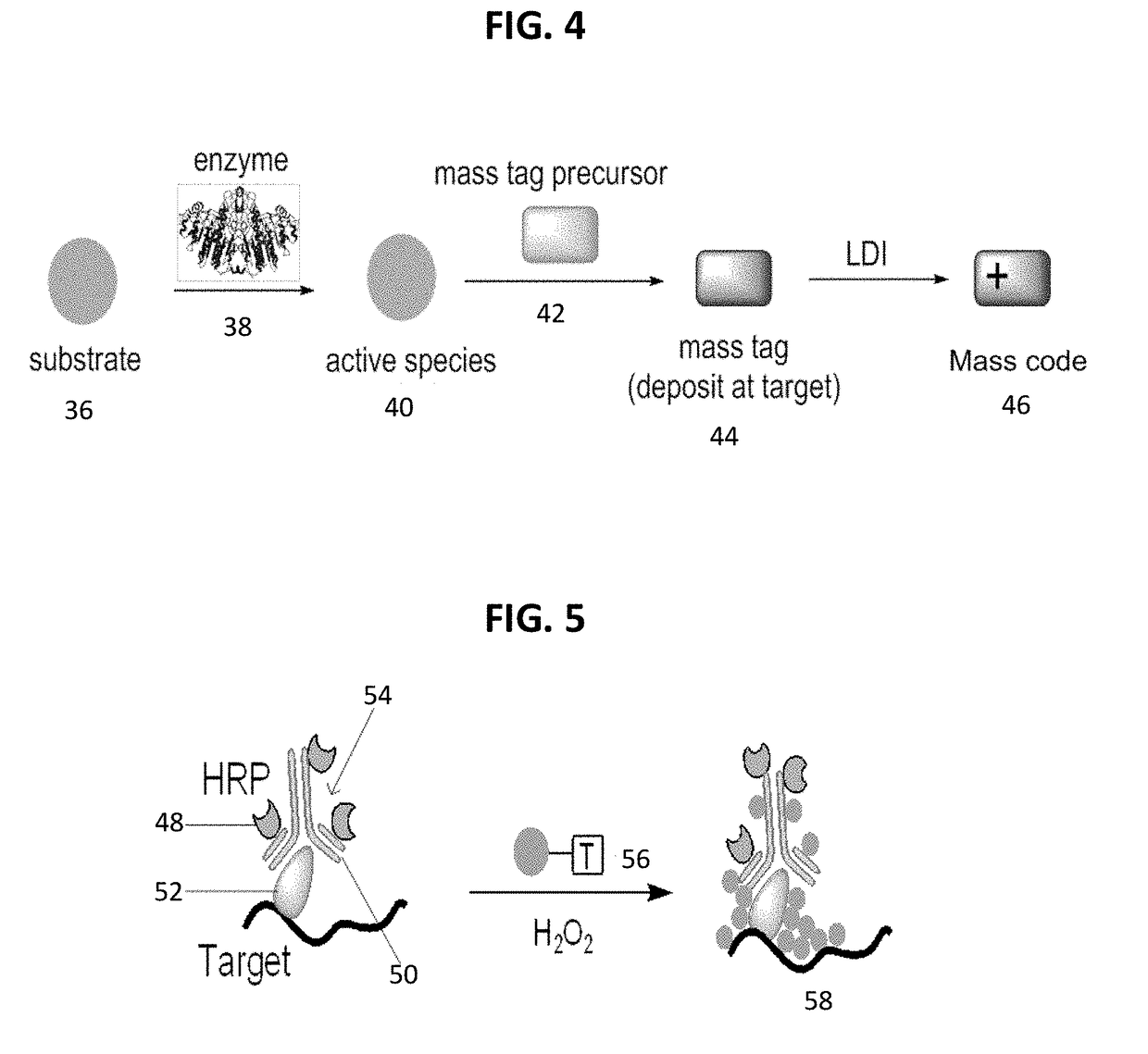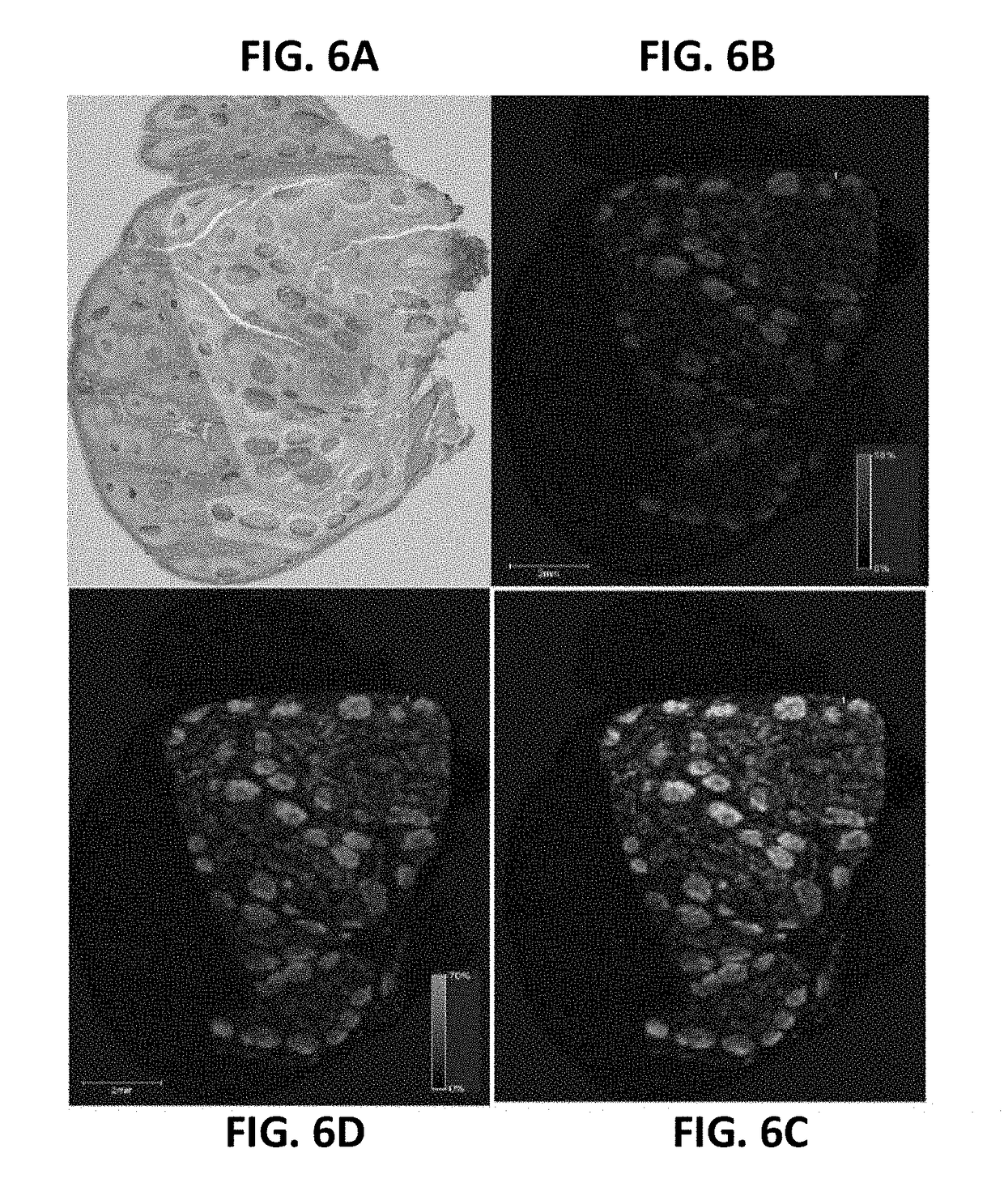Detecting targets using mass tags and mass spectrometry
a mass spectrometry and target technology, applied in the field of mass spectrometry target detection using mass spectrometry, can solve the problems of reducing accuracy, patient well-being, and the inability of assay to distinguish between intact and truncated forms, so as to improve spatial resolution, eliminate “hot spots”, and detect more sensitive effects
- Summary
- Abstract
- Description
- Claims
- Application Information
AI Technical Summary
Benefits of technology
Problems solved by technology
Method used
Image
Examples
example 1
[0398]This example concerns using alkaline phosphatase to cleave a phosphate group from a mass tag precursor conjugate, and demonstrates the expected enzymatic reaction and subsequent detection of the mass code (Scheme 23).
To test the substrate, a 1 mg / ml malachite green phosphate solution was made in water. To 200 μl of tris buffer (pH=10) was added 40 μl of the malachite green phosphate solution. The mixture was split into two tubes containing 120 μl each. 10 μl of an alkaline phosphatase (250 μl / ml) solution was added to one tube. Both tubes were then incubated at room temperature. After about 15 minutes the solution comprising alkaline phosphatase became slightly cloudy. The tube without alkaline phosphatase remained clear. Since the hydrolyzed product is not water soluble, the cloudy solution suggested that the alkaline phosphatase catalyzed hydrolysis of the substrate. After allowing the solution to stand overnight, 100 μl of acetonitrile (CH3CN) was added to each tube to diss...
example 2
[0399]This example demonstrates the use of styryl dyes as mass tag precursors. Styryl dyes generate comparable MS signals to that of a typical triarylmethane dye (triarylmethane dyes are proven mass tags).
[0400]LDI results of a mixture of malachite green and 4-[4-(dimethylamino)styryl] pyridine (DMA-SP; Aldrich #394211) at different concentrations produced the following mass codes: DMA-SP=224.573 and malachite green=329.266. The radical cation of DMA-SP was observed, demonstrating the use of styryl dyes as effective mass tags. Additional styryl dyes, such as (E)-4-(2-(benzo[d]thiazol-2-yl)vinyl)-N,N-dimethylaniline and (E)-2-(4-methoxystyryl)benzo[d]thiazole, demonstrated the same effect for use as mass tags.
example 3
[0401]This example illustrates the use of naphthol / triarylmethane diazo mass tag precursors, as described in Scheme 24.
[0402]Amino brilliant green (ABG) 1 mg / ml solution was made in 0.01 N hydrochloric acid (HCl) (made from 40 mg / ml ABG stock solution in DMF). NaNO2 solution in water was added to the ABG solution to provide a final concentration of 0.125% sodium nitrate (NaNO2). The color of the solution changed from colorless to light yellow to green in about 0.5 hour. 1-naphthol solution (1 mg / ml) was made in tris buffer (0.1 M, pH=7.5) from a 28 mg / ml dimethylformamide (DMF) stock solution. 50 μl ABG solution was added to 100 μl of 1-naphthol solution. A red precipitate was observed in less than one minute, indicating azo dye formation. The precipitate was separated by centrifugation and the red residue was dissolved in acetonitrile (CH3CN) to give a red solution. LDI of this solution resulted in a peak at m / z at 555.312, demonstrating the presence of the expected mass of the azo...
PUM
| Property | Measurement | Unit |
|---|---|---|
| binding constant | aaaaa | aaaaa |
| binding constant | aaaaa | aaaaa |
| binding constant | aaaaa | aaaaa |
Abstract
Description
Claims
Application Information
 Login to View More
Login to View More - R&D
- Intellectual Property
- Life Sciences
- Materials
- Tech Scout
- Unparalleled Data Quality
- Higher Quality Content
- 60% Fewer Hallucinations
Browse by: Latest US Patents, China's latest patents, Technical Efficacy Thesaurus, Application Domain, Technology Topic, Popular Technical Reports.
© 2025 PatSnap. All rights reserved.Legal|Privacy policy|Modern Slavery Act Transparency Statement|Sitemap|About US| Contact US: help@patsnap.com



